Paradun dry flies are probably my favourite because its a pattern that I feel confident fishing on both fast runs and slow glides. This helps me focus on fishing rather than changing fly as I fish my way upriver through pools and runs.
The olive version is my preferred dry fly for imitating a hatch of spring Olive Upright duns, and later in the season blue-winged olives.
I prefer this parachute fly over the traditional dry fly patterns because its body sits in the surface film, floats like a cork, is easy to see, and is eagerly taken by spring brown trout.
How to tie an Olive Paradun dry fly
Fly tying material list:
- Hook: #16 & 14 Kamasan 402
- Thread: Cahill 8/0 Uni-thread
- Tail: Coq de Leon
- Post: Cream Antron
- Body: Light olive SLF dubbing
- Thorax: Brown SLF dubbing
- Hackle: Cree cock
Step-by-step fly tying instructions:
Normally, I tie paradun flies using good-quality genetic rooster hackles because they produce finished flies with the best buoyancy. In this example, however, I’ve used a hackle feather from an Indian cock cape to demonstrate it’s possible to produce an acceptable fly with a low-cost alternative (for beginners or tyers on a tight budget).
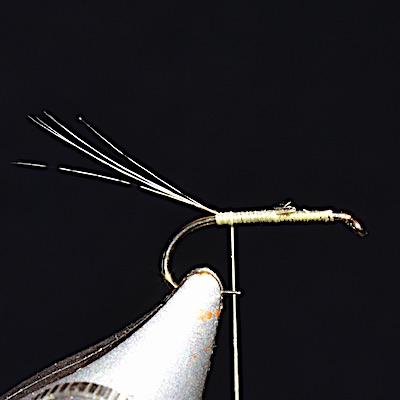
Step 1. With the hook locked in the vice, start the Cahill 8/0 thread at the head and take in touching turns to the bend. Opposite the barb, tie in 3-4 Coq de Leon fibres to form a tail.
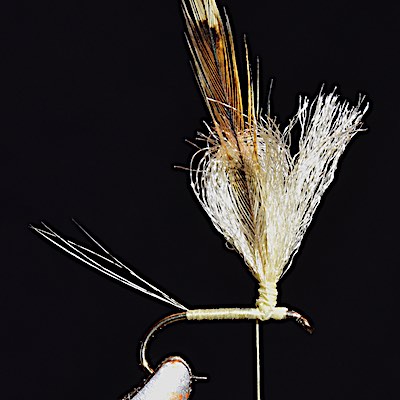
Step 2. Wind the thread in touching turns back up the hook, stopping 3mm from the eye. Take a 4″ length of cream Antron, fold in half and secure on top of the hook with the thread to form the post. Next, tie in the Cree hackle so that it extends up the post.
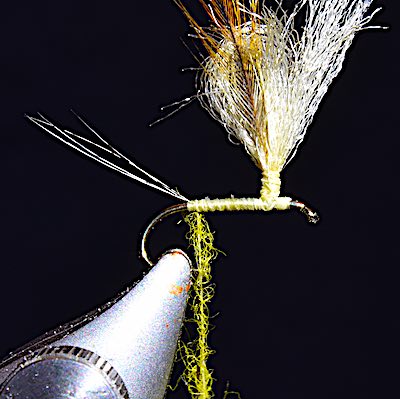
Step 3. Take the thread down the hook shank to the tail. Wax the thread and lightly dub it with olive SLF dubbing.

Step 4. Form a tapered body by winding the dubbed thread up the shank to the wing post. Apply a small amount of brown dubbing.
I tie Paradun flies with a slim tapered body, 4-5 turns of hackle that extends just passed the body because these features give me the best results.
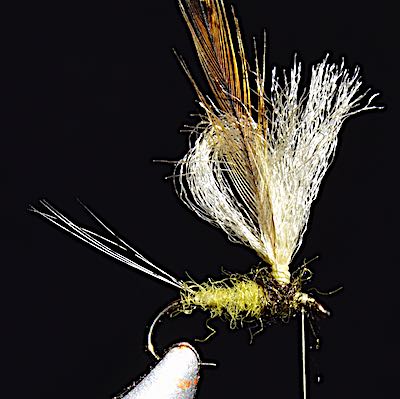
Step 5. Form the thorax area by winding the dubbed thread on either side of the post. Leave a 1mm gap between the thorax and the eye to form the head.
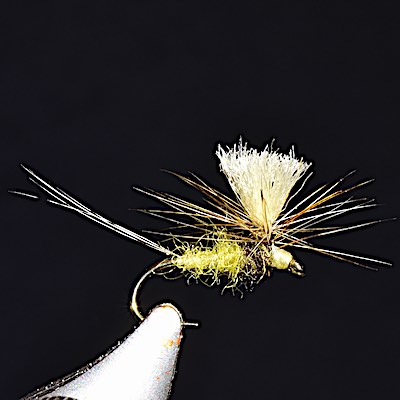
Step 6. Form the para-hackle by winding the Cree feather down the post to the hook shank. Pull back the hackle fibres with your fingers and tie off the hackle feather. Build a small head with the thread, whip finish, and apply varnish. Finally, trim the para-post to the desired length.
To aid visibility in different light conditions, it’s useful to have this fly tied with a range of post colours e.g. white, yellow, fluorescent pink, black, etc.
A small paradun in fast broken water with a highly visible fluorescent pink post…
can easily be seen at distance.
When dry fly fishing into the hours of darkness, I use a fly tied with a luminescent yarn post, which glows when charged with a pocket torch.
Olive Paradun dry fly fishing tips
On wild rain-fed rivers and streams, dry fly fishing with this fly tied on the end of your leader is often the best approach for trout feeding on duns as they emerge, especially when tied with a bright wing post.
When fishing slow glides, I use a paradun tied with cream (or grey) wing post because it’s less likely to spook fish feeding on Olive Upright duns than the one with the pink post. Only apply floatant to the hackle and para-post, then its body will sit in the surface film.
Usually, Olive Upright flies hatch at the heads of pools fed by oxygenated water and in the riffle sections of rocky rivers. On the Welsh Dee, where I predominately fish, good examples of pools include:
Studying the aforementioned pools will provide a clear understanding of what pools to look for on other rivers.
Equipment-wise, I use a 9ft 5# rod for dry fly fishing. Attached to the floating line is a 9ft 5X copolymer leader tipped with a 3 to 4 ft length of 3lb fluorocarbon.
It is important to apply fullers mud to the fluorocarbon tippet to remove its shine and make it sink. Whereas, Mucilin grease is applied to the remainder of the leader.
Overall, these paradun flies fish and cast well, are highly visible, and relatively easy to tie. I hope this article stimulates you to tie some and to test on your local river or on a trip to fish the Welsh Dee at Llangollen.
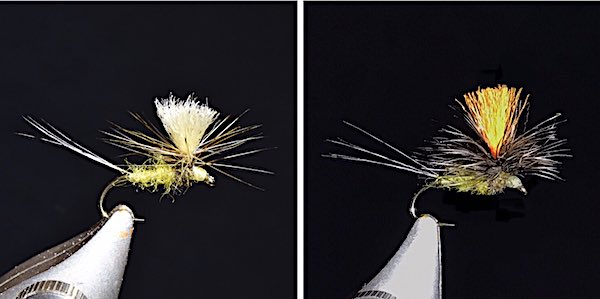
Cracking fly Andrew , great article
Hi James,
Thanks for the feedback.
Cheers, Andrew
yes another great fly nicely written will be giving his go
thanks again
Hi Colin,
I hope you manage to catch some trout on it.
Thanks for the feedback, Andrew